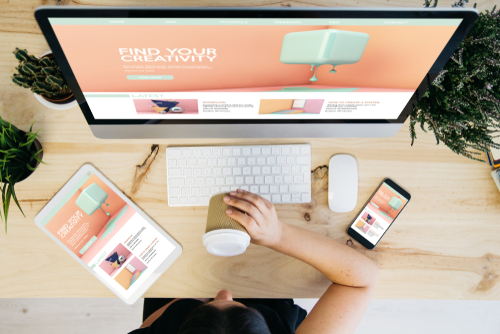
Beyond Responsive Design: Crafting Adaptive User Experiences
In today’s digital age, having a website that is responsive different screen sizes is essential. However, simply making your website responsive is no longer enough. With the ever-increasing variety of devices, contexts, and user preferences, it is crucial to go beyond responsive design and embrace adaptive design. At Blue Whale Media, we understand the importance of crafting adaptive user experiences that cater to the unique needs of your target audience. In this blog post, we will delve into the concept of adaptive design and explain why it is the key to delivering a truly tailored user experience.
Understanding Adaptive Design:
Adaptive design is a user-centric approach that focuses on tailoring the user experience to different devices, contexts, and user preferences. Unlike responsive design, which primarily adjusts the layout and content based on screen size, adaptive design takes into consideration a wide range of factors, including device capabilities, network conditions, and user preferences.
Consider Various Devices:
To create an adaptive user experience, we must consider the plethora of devices available today, from smartphones and tablets to laptops and smart TVs. Each device has its own unique features and limitations, such as screen size, input methods, and processing power. By designing with adaptability in mind, we can ensure that your website looks and functions flawlessly across all devices, providing a consistent and seamless experience for your users.
Account for Different Contexts:
In addition to considering different devices, adaptive design also takes into account various contexts in which users interact with your website. For example, a user may be accessing your website while on the go, in a noisy environment, or with limited internet connectivity. By understanding these contexts, we can optimise the user experience by prioritising essential information, reducing load times, and providing intuitive navigation options. This ensures that your website remains usable and accessible in any situation, enhancing the overall user experience.
Address User Preferences:
Every user is unique, with their own preferences and needs. Adaptive design allows us to cater to these individual preferences by offering personalised experiences. For instance, we can implement features such as dark mode, font size adjustments, and language preferences to accommodate users with different visual impairments, language proficiency, or personal preferences. By providing customisable options, we empower your users to tailor the website to their liking, resulting in a more engaging and satisfying experience.
The Benefits of Adaptive Design:
By embracing adaptive design, you can unlock several benefits for your business and users. Firstly, an adaptive user experience improves user satisfaction and engagement. When users feel that a website is tailored to their needs and preferences, they are more likely to stay longer, explore more content, and ultimately convert into customers.
Secondly, adaptive design enhances your website’s performance and accessibility. By optimising the user experience for different devices and contexts, you can increase your website’s load speed, reduce bounce rates, and ensure that all users, regardless of their circumstances, can access and navigate your website seamlessly.
Thirdly, adaptive design future-proofs your website. As technology continues to evolve and new devices emerge, your website needs to be able to adapt and provide a consistent user experience across all platforms. By implementing adaptive design principles, your website will be flexible and adaptable to any future changes, ensuring that it remains relevant and effective in the long run.
Implementing Adaptive Design:
To implement adaptive design effectively, it is crucial to work with a knowledgeable and experienced web design agency in Manchester like Blue Whale Media. Our team of experts understands the intricacies of adaptive design and can carefully craft a user experience that adapts to different devices, contexts, and user preferences.
We begin by conducting thorough research to understand your target audience, their devices, and their unique contexts. This allows us to design and develop a website that caters to their specific needs and provides a seamless experience across all platforms.
Next, we employ responsive design techniques to ensure that your website responds and adapts to different screen sizes and resolutions. This includes fluid layouts, flexible images, and scalable typography, among other techniques.
In addition, we utilise user testing and feedback to continuously improve and refine the adaptive user experience. By gathering insights from real users, we can identify any pain points or areas for improvement and make necessary adjustments to optimise the user experience.
Conclusion:
In today’s digital landscape, simply having a responsive website is no longer enough. To truly stand out and provide an exceptional user experience, you need to embrace adaptive design. By considering different devices, contexts, and user preferences, you can create a website that is not only visually appealing but also highly functional and accessible.
At Blue Whale Media, we understand the importance of adaptive design and the impact it can have on your website’s success. With our expertise and attention to detail, we can help you craft an adaptive user experience that sets your website apart from the competition.
So, if you’re a small business owner looking to optimise your website’s performance and accessibility, consider implementing adaptive design with Blue Whale Media. Contact us today to learn more about our services and how we can help you create a website that adapts to the needs of your users. Remember, the key to success lies in providing an exceptional user experience, and adaptive design is the way to achieve it.





